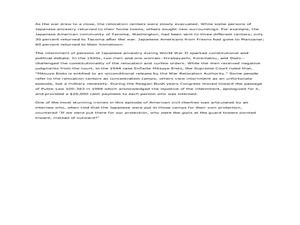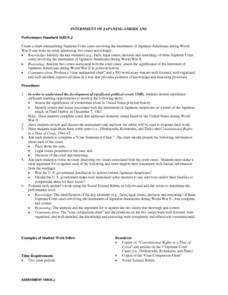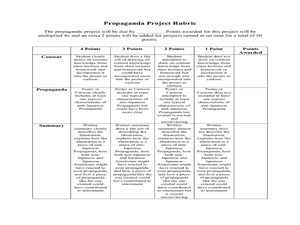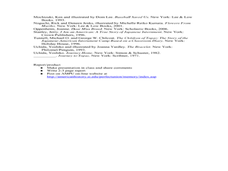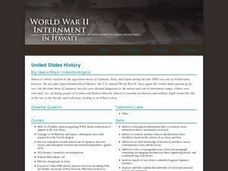Franklin D. Roosevelt Presidential Library & Museum
Pearl Harbor Activity #3: Public Opinion Word Cloud
As part of a study of the December 7, 1941 attack on Pearl Harbor, young historians imagine the feelings of those who lived during the attack by creating a word cloud of 10 words they think express the emotions of people at that time....
US National Archives
WWII: The Pacific 1939-45 – Pearl Harbor
Though December 7th, 1941 was a day "which would live in infamy," World War II had provided many infamous days, events, battles, and atrocities in the years before. So why were American forces so surprised when Japan attacked Pearl...
Franklin D. Roosevelt Presidential Library & Museum
Pearl Harbor Activity #1: Newspaper or Radio Account
After listening to President Franklin D. Roosevelt's "Day of Infamy" speech, young historians research information about the Japanese attack on Pearl Harbor, possible motives for the attack, and the consequences of the attack. Scholars...
Franklin D. Roosevelt Presidential Library & Museum
Pearl Harbor Activity #7: Pop Up Video Activity
A pop-up video version of FDR's "Day of Infamy" speech engages scholars in depending their understanding of the attack on Pearl Harbor. After watching the video, class members select five new things that they learned and research how...
Curated OER
Lesson 3: Japan's "Southern Advance" and the March toward War, 1940-1941
High school historians interpret historical evidence presented in primary resources to decide if the southern advance was a reckless step toward war, or if it was reasonable. They research the Japanese southern advance tactics during the...
Franklin D. Roosevelt Presidential Library & Museum
Pearl Harbor Activity #6: December 7 and September 11 - Infamy Twins?
Why did attackers on December 7, 1941, and on September 11, 2001, choose the targets they did? That is one of several questions young historians try to answer as they compare and contrast the two attacks. They also consider the...
Curated OER
Pearl Harbor
Students consider the impact of the attack on Pearl Harbor. In this World War II lesson, students research print and electronic sources about the attack on Pearl Harbor and then write news article about the attack from an American or...
Franklin D. Roosevelt Presidential Library & Museum
Pearl Harbor Activity #4: Who is the Audience?
Young historians use the prompts on a worksheet to analyze President Roosevelt's "Day of Infamy" speech. They identify the intended audience for the speech, the devices FDR used to persuade his audience, the responses promoted, and the...
Curated OER
Introduction to Japanese Internment
Young scholars discover details about Japanese Internment. In this World War II instructional activity, students analyze images and documents related to the movement of Japanese-Americans to West coast internment camps in the wake of the...
Curated OER
America and the Sino-Japanese Conflict, 1933-1939
High schoolers examine the U.S. stance regarding the Sino-Japanese conflict. In this diplomacy lesson, students analyze the sanctions employed by United States on Japan when they took over Manchuria. High schoolers determine how actions...
Curated OER
America Enters WWII
Students analyze the attack on Pearl Harbor. In this World History lesson, students research the events that led to the attack of Pearl Harbor then discuss the what happened after the attack. They finish the lesson with writing a...
Curated OER
Internment of Japanese-Americans
Students assess the significance of a watershed event in the political history of the United States . They identify events and issues associated with the internment of Japanese-Americans as a result of the Japanese attack on Pearl Harbor...
Curated OER
Japanese American Internment: Examining Racial Tensions
High schoolers discover how racial tension led to Japanese Internment. In this World War II lesson, students analyze political cartoons and posters related to the movement of Japanese-Americans to internment camps in the wake of the...
Curated OER
The failure of Diplomacy, September-December 1941
High schoolers investigate four main issues of concern between US and Japan prior to US involvement in World War II. In this role play lesson, students will take the role of US and Japanese negotiators trying to find a diplomatic...
Curated OER
Italian Enemy Aliens During World War II: Evacuation from Prohibited Zones
Students read and discuss the Enemy Alien Evacuation Order. They perform research by reading newspaper articles from February 1942 as well as investigating available information on the Internet. Students work in groups to create a...
Curated OER
Wives and Mothers in WWII
Eighth graders explore the effect of World War II from a financial standpoint. In this World History lesson, 8th graders review World War II through teacher lecture, reading and viewing pictures and cartoons, then discuss the hardships...
Curated OER
Evacuation: The Japanese Americans in World War II
Students examine Japanese internment camps of World War II. In this World War II instructional activity, students use primary and secondary sources to research the evacuation process and life within the internment camps. Students discuss...
Curated OER
This is Not a Drill
Pupils examine the events of Pearl Harbor through photographs, timelines and primary source documents. They research many different sources and discover the need to have more than one point of view. They write a newspaper article...
Curated OER
Lesson III: Crisis, Pearl Harbor, Internment
The third in a series of lessons introduced by “A Fence Away From Freedom,” uses the Smithsonian website, “A More Perfect Union: Japanese Americans and the U.S. Constitution” and focuses on the section of the presentation devoted to the...
US National Archives
WWII: The Atlantic 1939-45 – Battle of the Atlantic
The most dangerous line of attack during World War II wasn't the German planes soaring above Britain, but the U-Boats cutting off their supplies of food and equipment. Learners research the Battle of the Atlantic, the German campaign to...
Curated OER
Arab Americans: In the Aftermath of the Terrorist Attacks on the U.S.
Students examine the effects of the terrorist attacks in 2001. In this instructional activity on discrimination and the dangers of stereotyping, students will expand their understanding of stereotyping in contemporary society and compare...
Curated OER
World War II - Memory Book
Eighth graders read about and reflect upon a variety of events that occurred during World War II. They conduct research on the Holocaust and Anne Frank's life, the attack on Pearl Harbor, American life during this time and the bombing of...
Curated OER
Government Lesson Plan: Lesson Plan 7
Students examine the impact of Franklin Roosevelt's executive order on Japanese-Americans. They discuss Presidential executive orders, read a handout, answer discussion questions, and write a letter to President Roosevelt.
Curated OER
World War II: Internment in Hawaii
Learners examine world history by writing an essay in class. In this World War II lesson, students identify the attack on Pearl Harbor, the response from the U.S and the effect it had on Japanese-Americans. Learners define Japanese...










